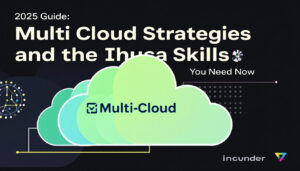How Much Are Health Insurance Premiums Increasing in 2025? A Complete Breakdown
Rising health insurance premiums are a reality for 2025, with average increases estimated around 7% for individual plans. This trend impacts families and individuals alike, making healthcare costs an even bigger expense in household budgets. Inflation, costly specialty drugs, and growing medical demand are key drivers behind these hikes. As we navigate these changes, understanding what to expect and why these costs are rising is essential.
ow Much Are Health Insurance Premiums Increasing in 2025? A Complete Breakdown ow Much Are Health Insurance Premiums Increasing in 2025? A Complete Breakdown ow Much Are Health Insurance
Average Cost of Health Insurance in 2025
The price of health insurance is climbing yet again in 2025, impacting families, individuals, and employees across the U.S. The average cost for an unsubsidized Affordable Care Act (ACA) marketplace plan is about $590 per month or $7,000 annually, reflecting a 7% increase from 2024. Factors like age, state of residence, and plan type play a huge role in determining premiums. Additionally, subsidies and metal tiers offer pathways to make coverage more manageable for some Americans. Let’s break down the key elements influencing health insurance costs in 2025.
Costs by Metal Tier
Health plans in the ACA marketplace are categorized into Bronze, Silver, Gold, and Platinum tiers. These tiers balance monthly premiums against out-of-pocket costs like deductibles and co-pays. Here’s a snapshot of average premium costs based on tier in 2025:
- Bronze Plans: ~$495/month
- Silver Plans: ~$618/month
- Gold Plans: ~$655/month
- Platinum Plans: ~$1,166/month
Bronze plans typically have lower premiums but higher deductibles and out-of-pocket costs, making them best for healthy individuals with minimal medical needs. In contrast, Platinum plans come with the highest monthly costs but offer the lowest out-of-pocket expenses, ideal for those requiring regular or specialized care.
The balance between premiums and out-of-pocket expenses is where choosing the right tier becomes critical. For example, if you’re a young, healthy person with minimal health expenses, the savings on a Bronze plan’s premium can outweigh its higher deductible. However, families frequently using healthcare services may save more overall with a Gold or Platinum plan despite the higher monthly cost.
For more details on metal tier pricing and to explore 2025 ACA marketplace plans, visit Healthcare.gov.
Impact of Age on Premiums
Age significantly influences how much you’ll pay for health insurance. Here’s how premiums change based on age in 2025:
- 21-Year-Old: ~$445/month
- 40-Year-Old: ~$590/month
- 60-Year-Old: ~$1,208/month
Insurance providers are allowed to charge older adults up to three times more than younger individuals. This “age rating” rationale accounts for higher medical needs that surface with age. For instance, while a 21-year-old might only need occasional check-ups, someone in their 60s could require chronic-condition management or frequent specialist visits.
This steep premium hike for older individuals is particularly burdensome for those not yet eligible for Medicare. However, subsidies (discussed below) can help mitigate these costs for qualifying households.
Curious about what factors contribute to these age-based pricing differences? Check out this analysis from Health System Tracker.
How Subsidies Lower Costs
ACA subsidies, including premium tax credits and cost-sharing reductions, help millions afford coverage, especially as premiums rise in 2025. Here’s how they work:
- Premium Tax Credits: Designed for households earning between 100% and 400% of the federal poverty level (FPL), these subsidies cut down monthly premiums. For instance, a family earning 250% of FPL could see their premium decrease from $590/month to under $200/month.
- Cost-Sharing Reductions (CSRs): Available to Silver tier enrollees earning up to 250% of FPL, these reduce out-of-pocket expenses like deductibles and co-pays.
Eligibility depends on income level, household size, and state residency. For families and individuals falling just under the subsidy cap, these reductions can ease the financial burden of health insurance. For a personalized estimate and subsidy eligibility, use the plan finder at Healthcare.gov.
Notably, several states have expanded ACA subsidies, meaning more Americans could qualify in 2025. This marks a critical step in making comprehensive health coverage accessible as premiums continue to outpace wage growth.
The health insurance market in 2025 may feel complex, but understanding metal tiers, age impacts, and subsidies can help you make better decisions with your wallet in mind.
Factors Contributing to Premium Increases in 2025
The expected rise in health insurance premiums for 2025, averaging around 7%, is driven by a mix of economic pressures, market behavior, and advancements in treatment options. By understanding the dynamics behind these cost increases, consumers can make better decisions about their healthcare options.
Inflation and Healthcare Costs
Inflation doesn’t just affect groceries or housing—it’s significantly impacting healthcare, too. General inflation raises the cost of goods and services in every industry, and healthcare is no exception. Hospitals, clinics, and medical practices are seeing their operational expenses climb due to higher costs for medical supplies, equipment, and utilities. Naturally, these increased expenses are passed onto insurance providers, which in turn trickle down to consumers through higher premiums.
Even without inflation, the cost of medical services continues to rise due to factors like advances in medical technology and the growing demand for healthcare services. According to analyses from Health System Tracker, insurers must adjust premium rates to keep up with these growing costs. Ultimately, the combination of general economic inflation and sector-specific price growth creates a multiplier effect, significantly influencing 2025 premiums.
Hospital Market Consolidation and Workforce Challenges
The healthcare industry is seeing increasing consolidation as hospitals and medical providers merge into larger systems. While this can sometimes lead to improved standardization of care, consolidation often results in reduced competition, giving these larger systems more power to set higher prices for their services. With less competition, insurers lose leverage in negotiating lower rates, leading them to hike premiums to cover costs.
Adding to this, labor shortages in the healthcare sector compound the issue. The pandemic worsened staffing challenges, and 2025 continues to feel the aftershocks of a strained workforce. Many hospitals have been forced to rely on expensive contract workers to cover gaps, putting further pressure on budgets. According to the American Academy of Actuaries, these workforce challenges are a significant contributor to increasing healthcare costs, inevitably pushing premium prices higher.
Specialty Drugs and Their Impact
Specialty drugs, particularly those targeting complex or chronic conditions, represent one of the fastest-rising sectors in healthcare spending. For example, GLP-1 medications, frequently used for diabetes management and now being leveraged for weight loss, have seen a surge in utilization. These drugs come with a hefty price tag, often exceeding tens of thousands of dollars annually.
As more patients and providers turn to these cutting-edge treatments, insurers bear a growing financial burden to incorporate them into coverage plans. According to Health System Tracker, the rapid adoption of these drugs has created a notable spike in costs, which insurers account for by raising premiums. The need to support research and development pipelines for future medical breakthroughs also indirectly contributes to these rising expenses.
While specialty drugs may improve the quality of life for many patients, their high costs pose challenges for insurers and policyholders alike, showing just one more way treatment innovation is driving 2025’s premium increases.
Comparing Insurance Premiums Across States
Health insurance premiums can vary significantly based on where you live. The cost differences stem from a mix of state regulations, local healthcare markets, and economic factors. Understanding how these variations work can help you make better decisions when comparing plans and providers.
Premiums Increasing in 2025? A Complete Breakdown
State-by-State Premium Variations
Health insurance premiums are far from uniform across the United States. For example, states like Wyoming often see much higher premiums compared to places like California. Here are some reasons behind these differences:
- State Regulations: Some states implement stricter rules regarding minimum coverage standards. This often leads to higher costs for insurers, which are passed down to the policyholder.
- Healthcare Market Competition: States with fewer hospitals and insurance providers (such as rural areas) tend to have higher premiums due to limited competition. Conversely, states with a robust network of providers and insurers often have lower costs.
- Cost of Living: Higher living costs drive up expenses for healthcare providers, which directly impacts premiums. States like New York and Massachusetts often reflect these higher averages.
- Population Risk Profiles: States with older populations or higher obesity rates may experience increased demand for healthcare services, boosting premiums.
Healthcare costs by state can be explored further via helpful guides—see this Bankrate article for a breakdown.
Evaluating Insurance Providers
Selecting the right insurance provider is just as critical as evaluating plans themselves. To help you narrow down options, consider the following criteria:
- Coverage Options: Ensure the provider offers plans that align with your medical needs, whether it’s basic coverage or plans catering to chronic conditions.
- Network Size: Larger provider networks mean more choices for doctors, specialists, and hospitals. Always check if your preferred physicians are included in-network.
- Customer Service and Reviews: Reliable customer support is crucial, especially when navigating claims or resolving issues. Look for reviews or ratings from trusted sources like Investopedia.
- Financial Strength: A company’s financial health influences its ability to pay claims. Tools like A.M. Best ratings can provide insight into the financial stability of an insurer. Learn more about assessing an insurer’s credibility in this III article.
- Affordability and Discounts: All insurers are not created equal when it comes to costs. Compare premiums, deductibles, and out-of-pocket ceilings. Providers often offer discounts for bundling policies or maintaining a healthy lifestyle.
By carefully weighing these factors, you can find a policy that not only suits your budget but also provides strong support when you need it most. A helpful comparison tool shared by US News can make the process of comparing insurance rates more straightforward.
How to Prepare for Higher Premiums
Facing higher health insurance premiums in 2025 is a challenge, but the good news is there are steps you can take to mitigate the financial impact. By understanding subsidy opportunities, picking the most suitable plan, and finding strategic ways to cut related costs, you can protect your wallet while staying covered.
Maximizing Subsidy Opportunities
Premium and cost-sharing subsidies can significantly reduce what you pay for health insurance if you qualify. These savings are based on your income and household size, and they play a crucial role for individuals and families feeling the weight of rising premiums.
- Understand Eligibility Requirements: Premium tax credits are available for those earning between 100% and 400% of the federal poverty level (FPL). Cost-sharing reductions (CSRs) apply to incomes up to 250% of FPL and require enrollment in a Silver plan. Check your eligibility easily with tools like this one from Healthcare.gov.
- Calculate Your Savings: Before you select a plan, use an online subsidy calculator to see how premium tax credits and CSRs apply to you. Many people find that these credits substantially lower monthly costs. You can get more details and explanations through this guide by KFF.
- Monitor State-Level Programs: Some states have their own subsidy programs on top of federal options. These help middle-income individuals and families who might not qualify under federal rules. Look into your state-specific resources to maximize benefits.
Taking full advantage of these programs is like finding hidden discounts—you just need to know where to look.
Choosing the Right Plan for Your Needs
The right plan isn’t always the cheapest. It’s about finding a balance among monthly premiums, out-of-pocket costs, and the coverage that best meets your medical requirements.
- Assess Your Medical Usage: Do you need frequent specialist visits, or just an annual check-up? If your medical needs are minimal, a Bronze plan might offer good savings with lower premiums—just be prepared for higher out-of-pocket costs if you need care. For those with high medical usage, a Gold or Platinum plan might save you more long-term. Learn more about the types of plans in this Healthcare.gov overview.
- Check Plan Networks: Make sure the doctors, hospitals, and specialists you rely on are in-network. Out-of-network care can be prohibitively expensive. Use the tools provided by insurers or online platforms to check network participation.
- Factor in Prescriptions: If you have recurring drug costs, ensure the plan has favorable prescription coverage. Choosing a plan with high copays for your regular meds can painfully increase your expenses over the year.
Using these tips, you can confidently select a plan that minimizes costs while ensuring you get the care you need.
Reducing Healthcare Expenses
Even with rising premiums, there are actionable steps you can take to trim your overall healthcare spending. These small adjustments can add up to major savings.
- Utilize Telehealth Services: Virtual visits often cost less than in-person consultations, especially for routine or non-emergency care. Check if your insurer offers telehealth options as part of the plan.
- Choose Generic Medications: If you’re prescribed a new drug, ask your doctor if a generic version is available. These usually cost significantly less than brand-name alternatives.
- Stick with In-Network Providers: Always use in-network doctors, hospitals, and labs to avoid surprise out-of-pocket charges. You can get more help understanding these costs with resources like NerdWallet’s guide.
- Use Preventive Services: Most insurance plans cover preventive services like screenings, vaccinations, and annual check-ups at no additional cost. Staying healthy means fewer expensive treatments down the road.
- Explore Health Savings Accounts (HSAs): If your plan allows it, contribute to an HSA for pre-tax savings on future medical expenses. Think of it as a financial cushion for unexpected healthcare costs.
Implementing these cost-saving habits not only helps reduce immediate expenses but also builds a smart healthcare strategy for the long term.
Conclusion
Health insurance premiums are rising in 2025, with an average increase of 7%, reflecting ongoing challenges in the healthcare sector. These higher costs underscore the importance of understanding how factors like subsidies, age, and plan types affect what you pay. By exploring available tools, comparing options, and identifying strategies to reduce expenses, you can make better decisions for your financial and health needs.
Preparation is key. Take the time to evaluate your coverage, research subsidy opportunities, and consider how changes in costs will impact your budget. Thoughtful planning now can help you navigate this shifting landscape with confidence.
Your health and financial stability are interconnected—use the resources mentioned to stay ahead and find the solutions that work best for you.









